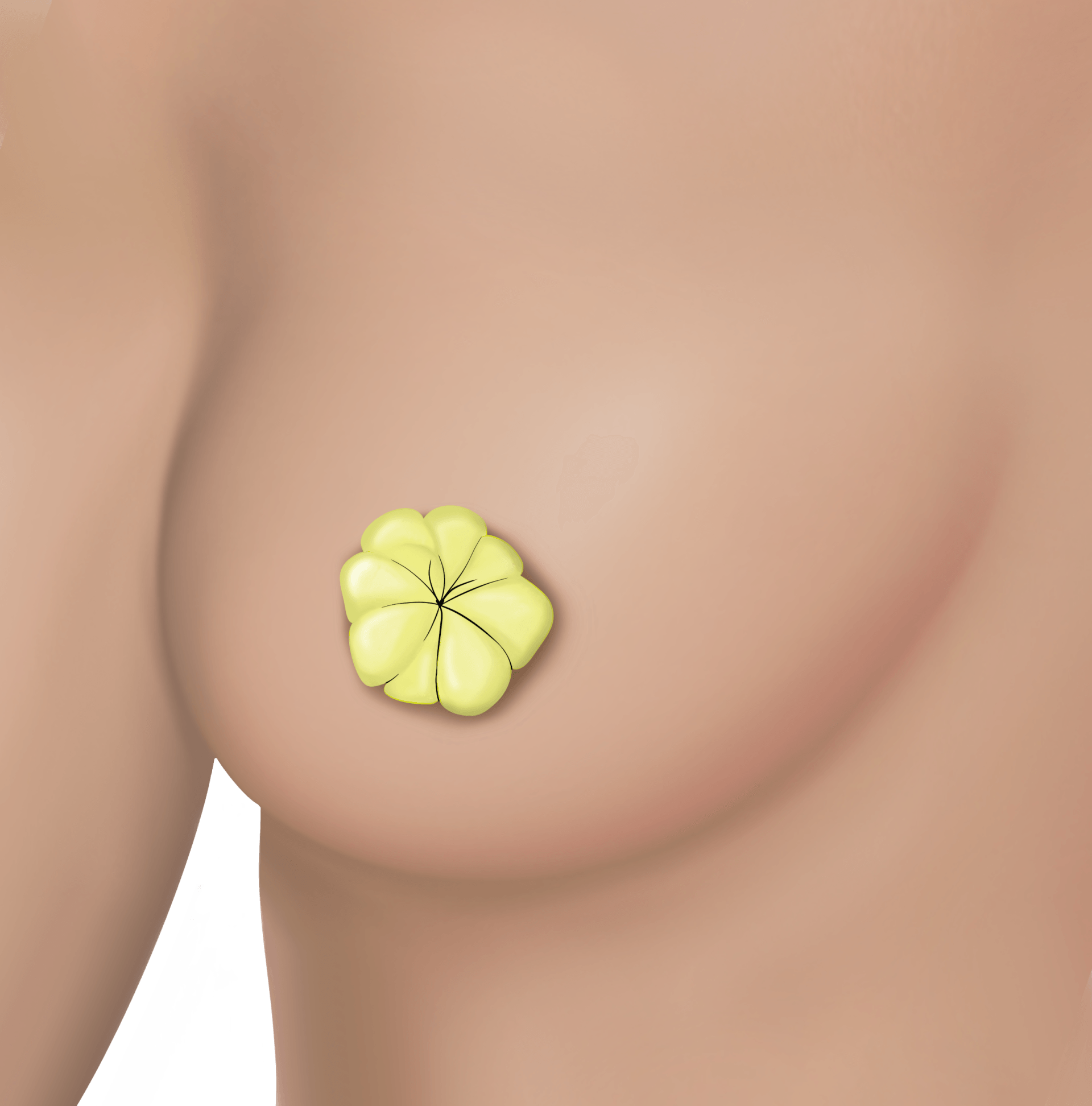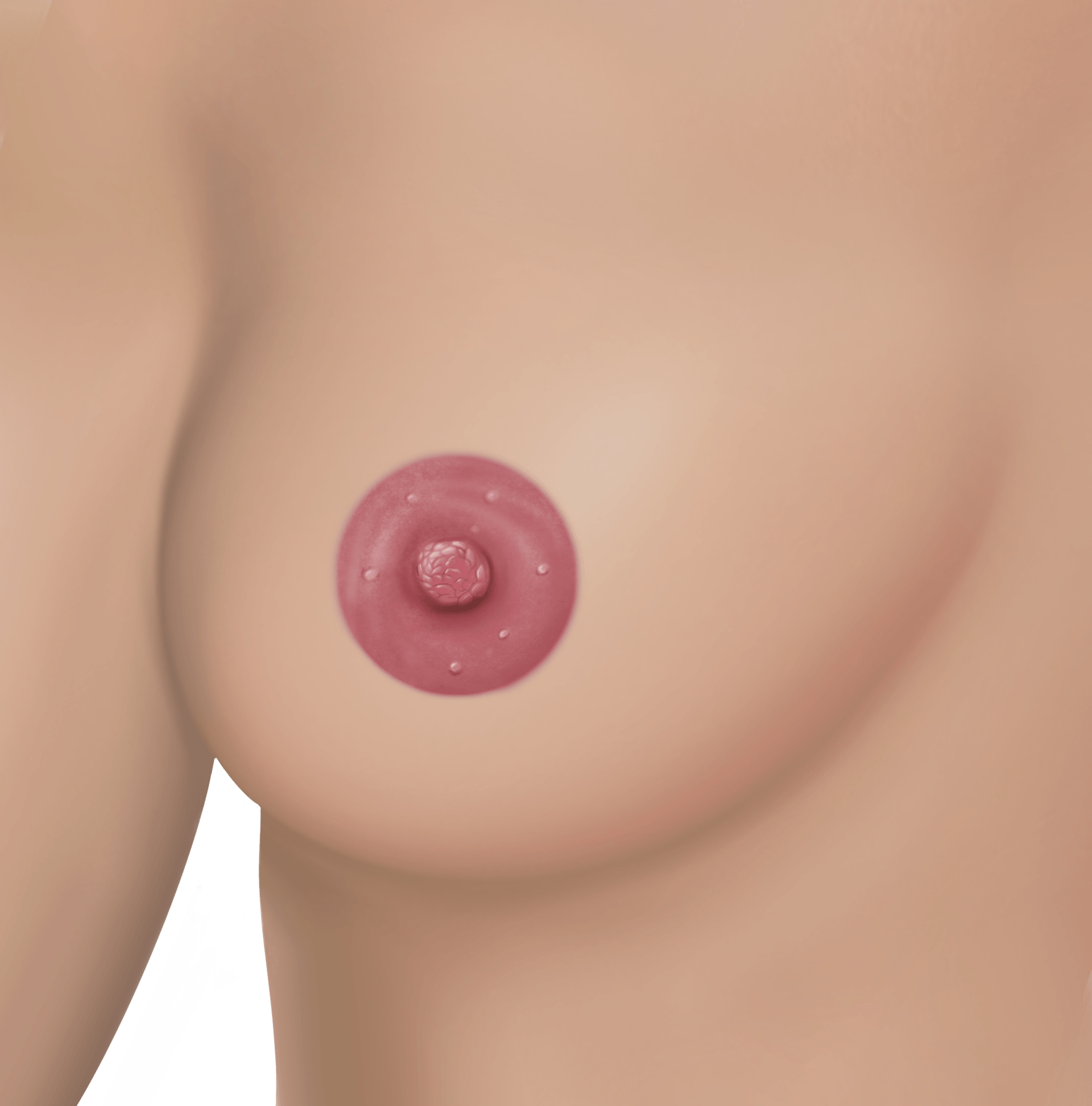Female To Male (FTM) & Female To Nonbinary (FTN) Reconstruction Chest Surgery
Free Nipple Grafts
What is a free nipple graft?
How does a free nipple graft heal?
What are the techniques involved in creating a free nipple graft?
Free nipple grafts are often performed as part of double incision top surgery. They are also sometimes used in other procedures like breast reduction when a very large amount of tissue is removed and there is concern regarding nipple areola blood supply and viability.
How is a free nipple graft created?
The first step involved in Double Incision Top Surgery involves marking a small oval around the existing nipple within the colored skin of the areola, and this oval usually measures about 26-30mm horizontally by 20-22mm vertically. A small blade is used to incise this marked oval and the blade is then used to raise the new nipple areola off of the underlying tissue. This process is called "harvesting the graft". All the skin around the location where the graft is taken from is planned to be discarded with the elliptical skin excision that is part of the double incision approach. The nipple graft is usually bulkier than we would like it to be, so small instruments called mosquitos are used to provide tension on the graft, and a small scissor called a curved iris scissor is used to remove some tissue from the underside of the graft until it is thinned out just the right amount. We want the graft to have some structure but also to be thin enough to "take" to the surrounding tissue where it will be placed. A very thick graft would be unlikely to survive because for the first few days the graft relies on oxygen and nutrients that get absorbed from the surrounding blood supply where the graft is placed. A very thin graft will develop an almost inverted nipple, so the balance lies somewhere in between. Once the graft is adequately thinned out, it is placed in a moist sponge and allowed to sit while the rest of the surgery is performed.
Once the double incision surgery is complete, the new nipple position is marked out after carefully measuring for symmetry. Usually the graft is placed about 20 cm from the sternal notch, and along the lateral edge of the pectoralis major muscle. A similar oval is marked out as when harvesting the graft, and the skin overlying the marked oval is shaved off, a process called "de-epithelialization" which means removing the very top layer of skin, leaving the thicker layer of skin underneath, called the "dermis". The dermis is the part of your skin that is red and bleeds, and this layer provides a healthy wound bed for the nipple graft to take.
Then the nipple graft is sutured in place using fine sutures followed by thicker sutures around the graft that will be used to tie a dressing over the graft. This dressing is called a "bolster" and is made of an outer layer of xeroform which gives it the yellow appearance because it has iodine in it. Before the bolster is attached, fine punctures are made in the graft which do not affect the future aesthetic of the graft, but allow for fluid egress to prevent bleeding underneath the graft.
How Does the Graft Heal?
In the first 24-4 hours, fluid containing oxygen and nutrients are absorbed into the graft from the surrounding wound bed in order to keep the graft alive, a process called "imbibition". After 48hours, capillaries in the nipple graft start to align with capillaries in the recipient wound bed("inosculation")and those capillaries will heal into each other in order to properly vascularize the graft, "neovascularization". This whole process takes about 4-5 days. It is very important to keep the graft from shifting in this critical healing time period, because we need those tiny capillaries to be able to grow into each other without being disrupted.
After 5 days, it is ok to remove the graft dressing. The graft dressing is usually removed somewhere between day 5-8 after surgery to ensure survival of the graft. When the dressing comes off the graft is still delicate, but it has developed blood supply so the bolster dressing is no longer required. From day 7-21 there is a lot of strength gained in the graft and the color will change quite a bit. The graft will be dry and will require some extra moisturizing usually for a couple of months, but will eventually adapt to become like the rest of your skin.
Why Choose Us?

All Styles & Techniques
Double Incision, Keyhole, Peri, Buttonhole, Subglandular and Submuscular Breast Augmentation, Body Masculinization, Feminization and More

All Identities
Patients of all gender identities and all pronouns are welcome here

Individualized Care
We provide individualized care based on your specific surgical needs and goals and will inform you about your options

Book An Appointment With Us



